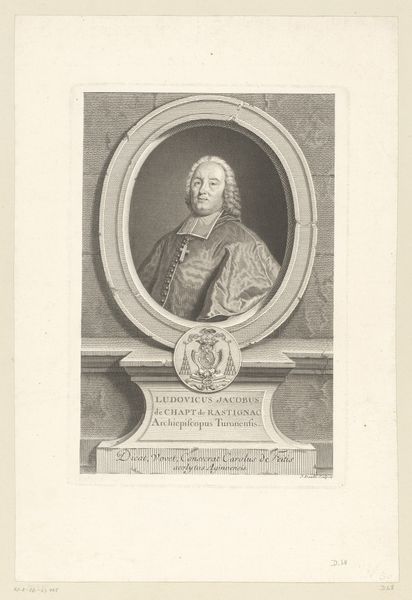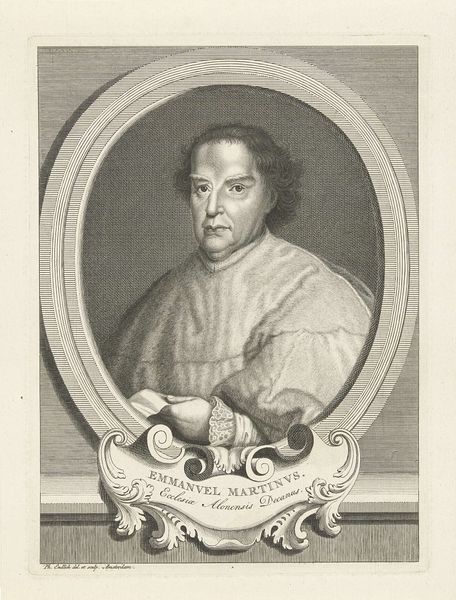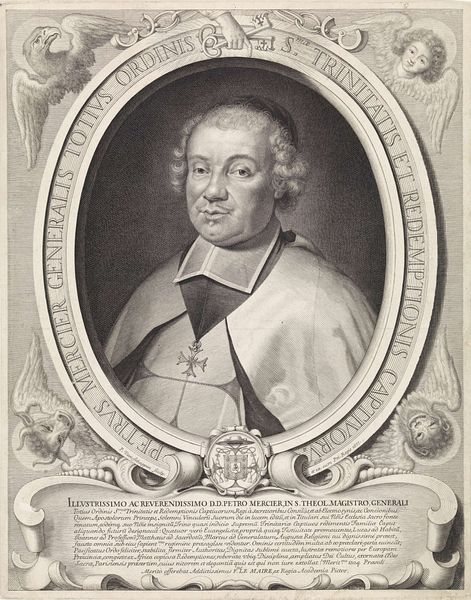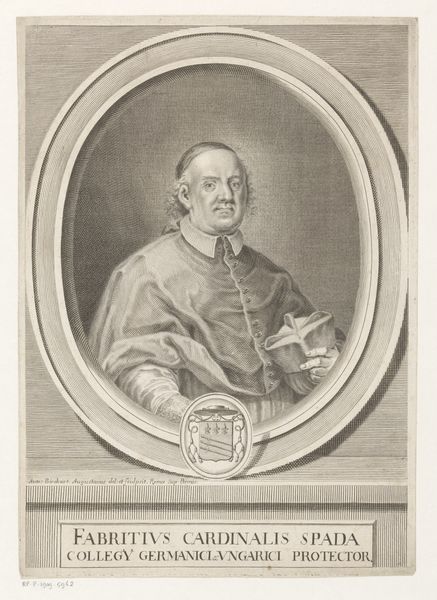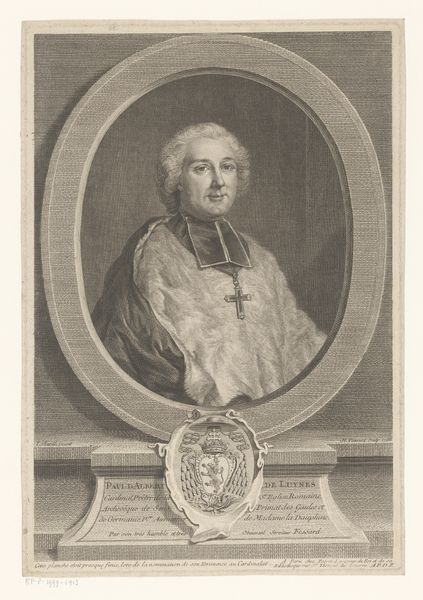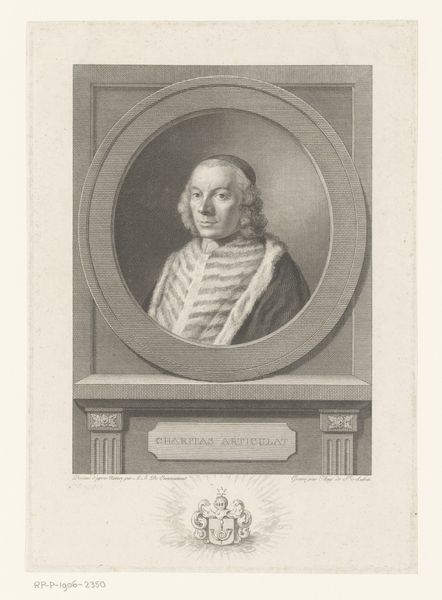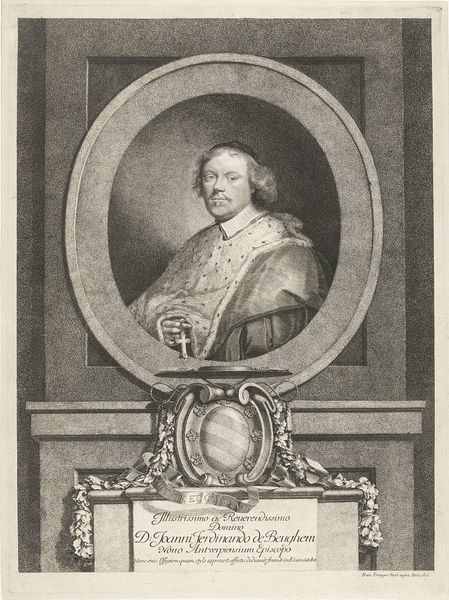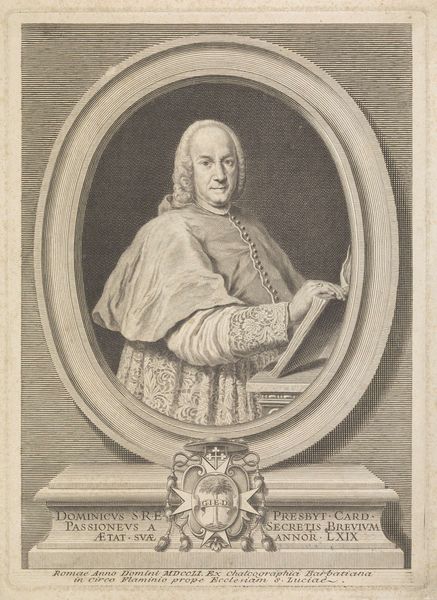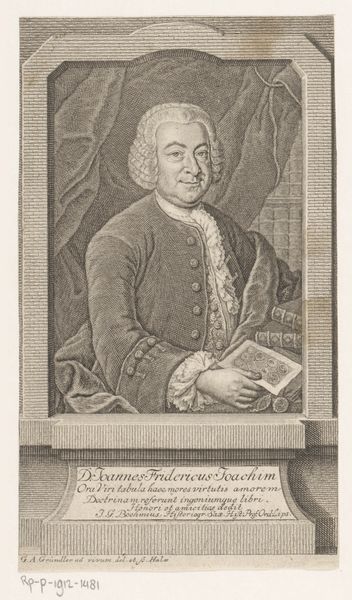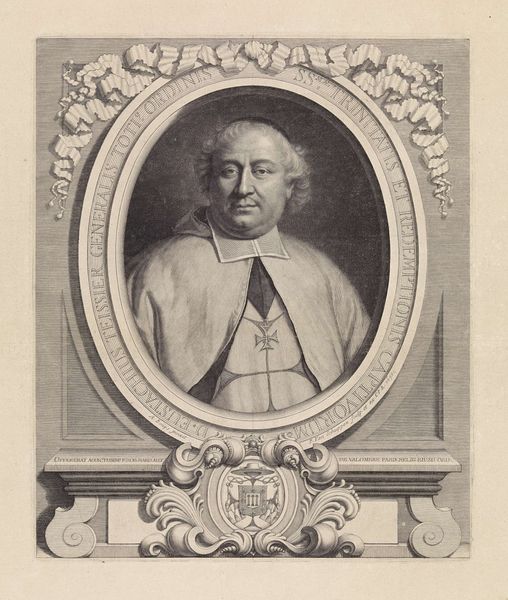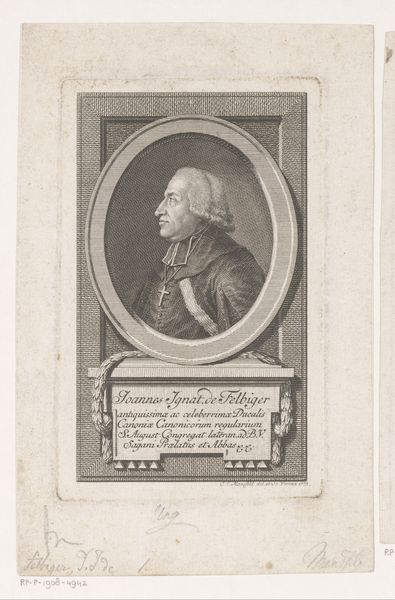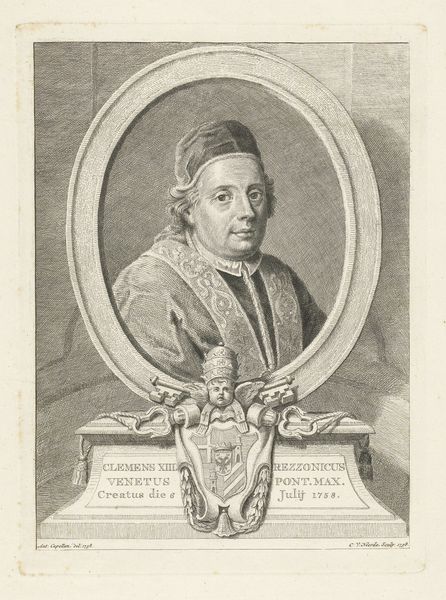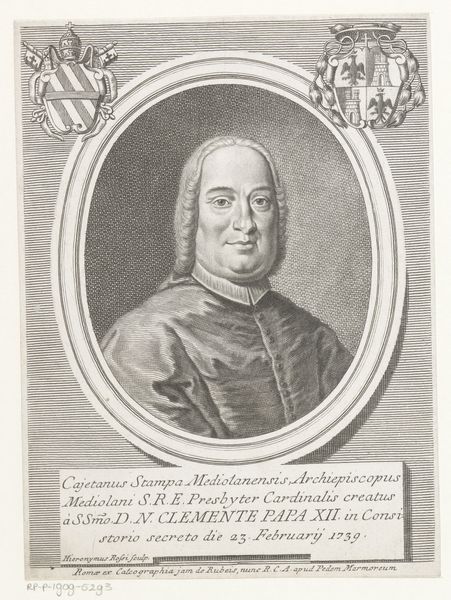
Dimensions: height 320 mm, width 237 mm
Copyright: Rijks Museum: Open Domain
Editor: This engraving from 1792 is entitled "Portret van Cesare Brancadoro," by Theodorus de Roode. I'm immediately struck by the subject’s confident gaze and the very formal, almost staged presentation within the oval frame. What can you tell me about the historical context of this image? Curator: Indeed. It is worthwhile thinking about this engraving not merely as a portrait, but as a visual artifact embedded within a network of power, representation, and patronage. Brancadoro was an Archbishop, so his portrayal would serve very particular socio-political purposes. Have you considered the role of religious institutions in commissioning and disseminating such images during the late 18th century? Editor: I haven't, really. It's clear he held a high position in the church, so presumably this image would be used to reinforce that? Was it common to have engravings made of religious figures, or was it a sign of particular significance? Curator: Precisely. Think of the mass communication networks of the day. Printmaking enabled images to be replicated and circulated widely. So, what we are seeing here isn't just a portrait, but a carefully constructed public image. De Roode may have created this to amplify Brancadoro’s influence or to disseminate a specific message aligned with the Church's interests. Why do you think Brancadoro is posed with a flag? Editor: Good question! I hadn't considered its significance other than a visual attribute denoting a bishop. It seems he has many accolades to be flaunted! Thanks for teaching me a bit about image distribution and politics! Curator: Of course! Examining art within its broader social and political context unveils fascinating stories about power, belief, and representation.
Comments
No comments
Be the first to comment and join the conversation on the ultimate creative platform.
